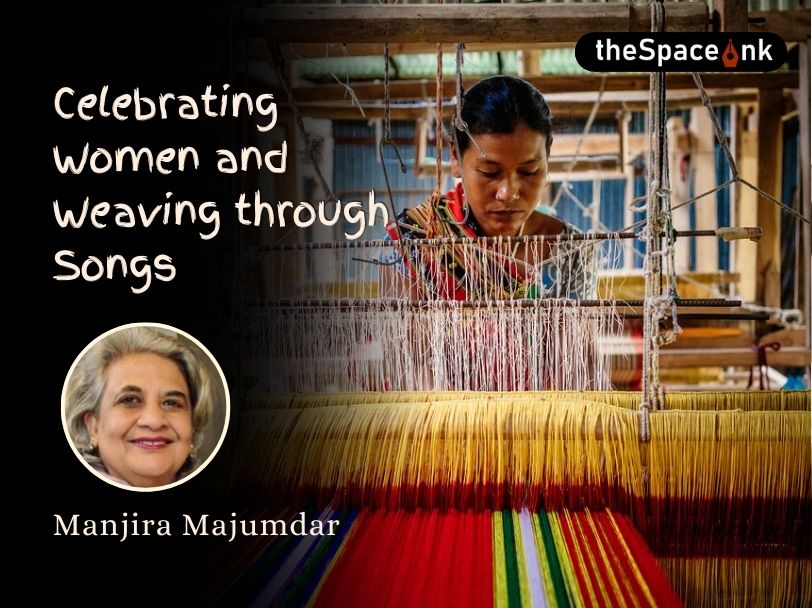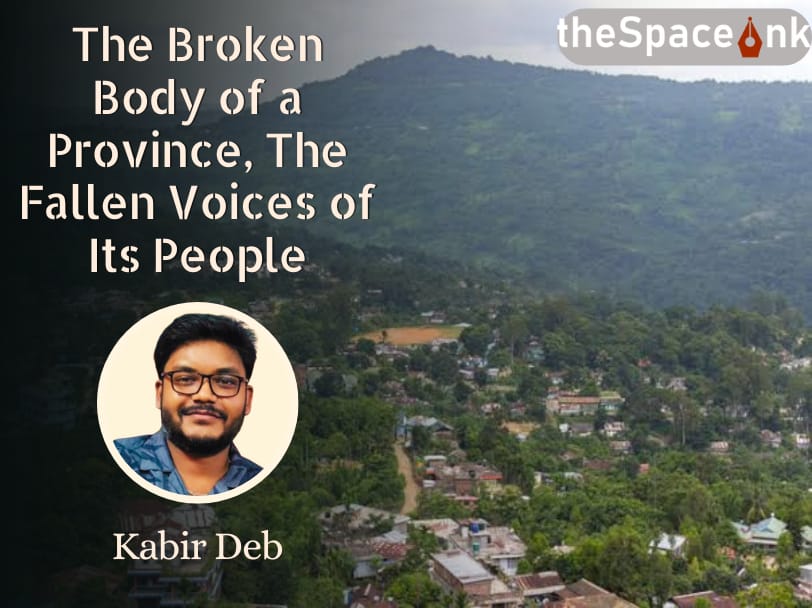I grew up in a very cosmopolitan world during the fifties and sixties in Calcutta. I took my Jewishness and my Indian-ness for granted. I went to Loreto House where my classmates came from a range of backgrounds. There were Hindus, Muslims, Christians, a Parsi, and another Jewish girl in my class. We also had an Indian Chinese classmate as well as girls from Japan, England, the Philippines, Italy, Iran, and Czechoslovakia. Difference was the norm, manifest in how we looked and from the aromas that drifted from our tiffin boxes.
At my home we had Calcutta Baghdadi Jewish food several times a week along with Indian, Anglo-Indian, Parsi, and Burmese dishes, with the occasional spaghetti and home-made pizzas. The Friday night prayers set my home apart. My mother said the prayers as she lit the sabbath candles, we sang the traditional sabbath songs that praised the Lord, “King of All Kings,” and praised the woman of the house, “far above rubies is her worth…” A blessing on the wine and bread followed.

The sacred wine was made and bottled at the Beth El synagogue till the early 1970’s when Isaac Agha Baba, the only person who knew to make Kosher wine, (that is in keeping with Jewish dietary laws), passed away. Kosher wine requires that the wine making process is handled by Sabbath-observing Jews. The braided challah bread came from Nahoums, a Jewish owned bakery still an institution in Calcutta occupying the largest space in the New Market. Chicken was the primary meat eaten in Jewish households. Till the mid-sixties a shochet (ritual slaughterer) sat in the New Market and in the Bowbazaar market to perform this duty, where in keeping with Jewish dietary laws he checked the animal for good health then with a single cut with a sharp knife rendered the animal insensible to pain.
The Friday night sabbath meal included the famed aloo makalas – potatoes pricked and soaked in oil and deep fried till a hard crisp shell formed, the inside oozing oil and almost hollow. It went perfectly with the hilbe, the green fenugreek and lemon sauce. There was always roast chicken and mahashas, vegetables carved out and stuffed with rice, minced chicken, and finely chopped vegetables. Friends enjoyed the ritual and the meal with us.

Saturday was a school day for me. My father shut his office and celebrated the sabbath with other Jewish families who observed Sabbath. On sabbath we are not supposed to work or light a fire, carry money, or use a vehicle. More traditional Jews observed the sabbath and attended the morning service at their respective synagogue. They came home to a grand meal of Hameem, cooked overnight to avoid lighting a fire. The chicken, stuffed with rice, livers, and gizzards, was cooked with rice and flavored vegetables. Hameem included the soupy rice preparation (Shorba), the stuffed chicken and rice (Hashwa), and crisp rice and chicken that stuck to the pan (Hakaka). The left-over Aloo Makalas were chopped and served along with boiled eggs, lemon juice and coriander. After his heavy lunch, my father would take a long nap. By the evening he would be irritable as he did not smoke on sabbath. He waited anxiously for the seven stars to appear in the sky to light his Charminar.
Other than this weekly family ritual, I learned to read the prayers in Hebrew from my grandmother who supervised the Jewish Girls’ Hostel in the Jewish Girls School where there were about a dozen girls. We attended synagogues during the High Holidays. It was at the synagogue that I felt part of our larger conservative Arabic Jewish community that included Jews from many parts of the Middle East. We were called Baghdadi Jews because we followed the liturgy of Baghdad, a center of Jewish learning. We had formal dresses tailored for the festivals and our shoes were purchased at Henry’s, a Chinese shoe shop at the New Market. We wore hats that were still sold in a couple of small shops in the New Market. Very often the hat was refurbished to match our outfits. Elderly women never took to hats and wore a kerchief on their heads.

My family attended the Neveh Shalome synagogue, the first synagogue in Calcutta (1826) before it was demolished to become part of the larger Maghen David complex built in 1884 by Sir David Ezra. Due to community disputes this merger never occurred – the Neveh Shalome was rebuilt in its original style (1912). Our congregation dwindled each year, as between the late forties and the late sixties most of the four thousand strong Jewish community, emigrated to other parts of the world. Luckily, we still had quite a large contingent of children, courtesy of the Meyer family, who hailed from Burma. There were small Baghdadi Jewish communities living and trading in the port cities from Baghdad to Shanghai. Mr. Meyer had three Burmese wives: we learned that he could do so because Jews are allowed to adopt the customs of the lands in which they live. Between the wives the Meyers had sixteen children, mostly boys, and the rest of us children at the Neveh Shalome were grateful for their lively presence.

The most joyous Jewish festival is Simchat Torah, the rejoicing of the law, where all the beautiful sefer torahs held by each synagogue are displayed and carried in procession. The Neveh Shalome had about fifty sefer torahs housed in the inner sanctuary. Each scroll, containing the Five Books of Moses, written on parchment by dedicated scribes in Baghdad. The parchment, encased in wood, is enshrined in a large elaborately embossed silver case. Sifrei torahs weighed 10 to 15 kilos. At Simchat Torah we sprayed each other with water. My father would buy plastic water pistols for all the children: in my parent’s time they sprayed each other with scented water from imported glass vials called Pandoras purchased in Canning Street.

Though the last Jewish wedding in Calcutta was in1984, I never attended one as most of our family and friends had left the city. I remember my brother’s Bar Mitzvah, the coming-of-age ceremony, after which a boy is expected to read his prayers and wear tefillin every day, participate in synagogue services and take his place in the Jewish community. My brother would dutifully say his prayers, wear the blue and white tasseled prayer shawl, bind the leather straps on his arms and place the shawl and phylacteries, a set of small black leather boxes containing scrolls of parchment inscribed with verses from the Torah, in a specially made velvet and embroidered case (sissit case).
My family attended the Neveh Shalome synagogue, the first synagogue in Calcutta (1826) before it was demolished to become part of the larger Maghen David complex built in 1884 by Sir David Ezra. Due to community disputes this merger never occurred – the Neveh Shalome was rebuilt in its original style (1912).
When I went abroad to study at the age of sixteen (1971), I left this world behind. When I came back in 2003, there were barely thirty Jews left in the city. There are three impressive synagogues, two are national Grade 1 heritage monuments, but we lack a minyan, the 10 Jewish men necessary for a service. There is the Jewish Girls School and the Elias Meyer Free School and Talmud Torah for boys, but there have been no Jewish students since the late nineteen eighties. This year there were three more burials at our sprawling Narkeldanga cemetery.
Our luminous history lives through the grand achievements of our ancestors that helped shape Calcutta, the stately mansions built by Jews including the iconic Esplanade and Chowringhee Mansions, and the increasing number of films and writing that recall our presence.
Images courtesy: Sanjeet Chowdhury
Some of the images used in this article were displayed in the upper BEKI Gallery, Connecticut, USA
Jael Silliman, born in Kolkata, was educated at Wellesley College, Mass., Harvard University, University of Texas, Austin. She received her doctoral degree in international education at Columbia University. She has written extensively on gender and economic development, and women’s movements in the developing world. 'The Teak Almirah', 'Where Gods Reside: Sacred Places of Kolkata', 'Jewish Portraits, Indian Frames: Women's Narratives from a Diaspora of Hope' are some of her published works.









6 Responses
An amazing story which captures aa soul of a diaspora
Lovely piece Jael. Thank you for sending it
Very interesting and informative.
The Calcutta Jews, like the rest of the Indian Jewish community, made a remarkable contribution to the city and the country
Jael, your writings are always a pleasure to read – full of warmth in the minute details.
I am a die hard fun of yours .It is an absolute bliss to read your write up or your speech .